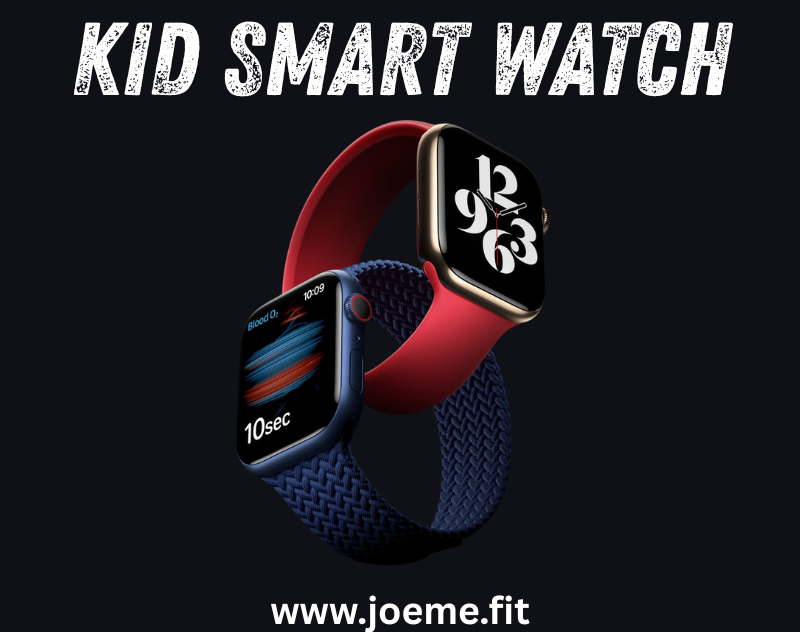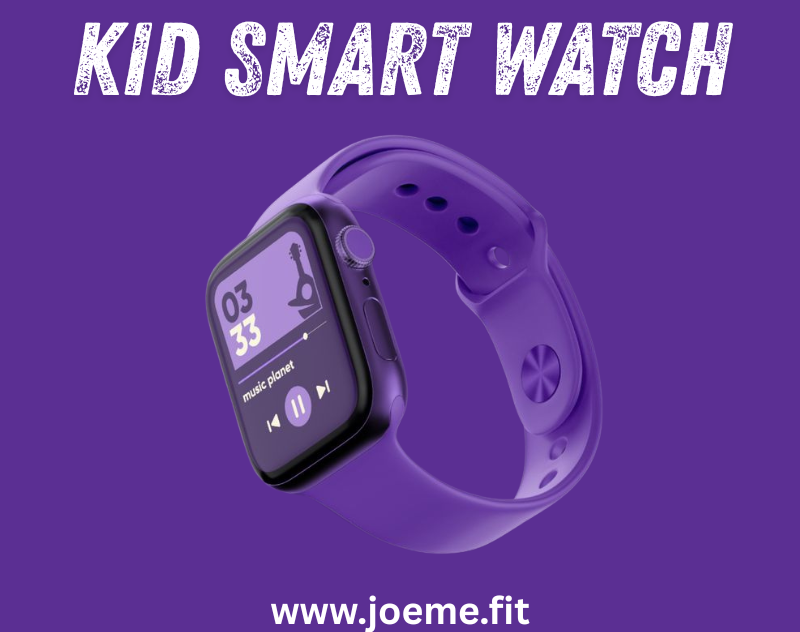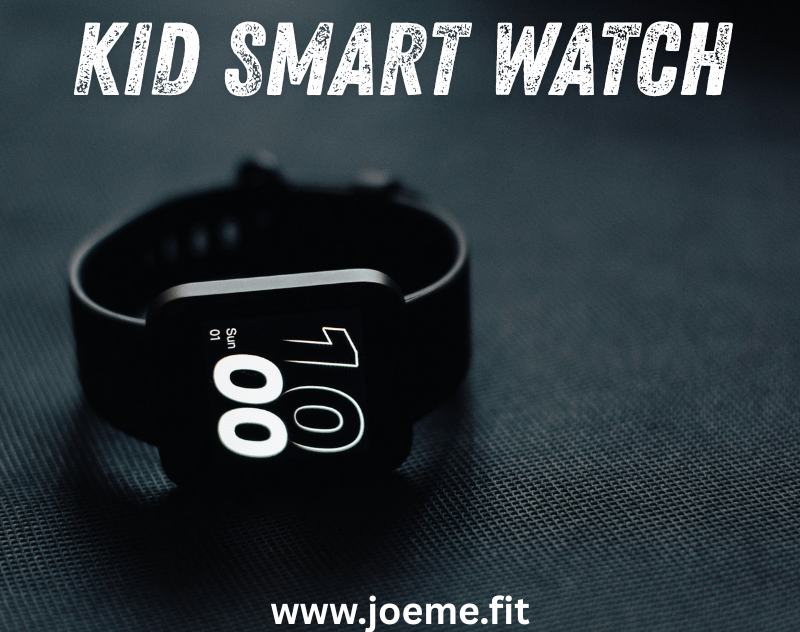Choosing the right kid smart watch isn’t just about buying another gadget — it’s about making a decision that directly impacts your child’s safety, communication, and independence. As parents, we want to give our kids freedom while staying connected. A smart watch seems like a perfect solution: it’s less distracting than a smartphone, easier to carry, and often includes safety features like GPS tracking and SOS buttons.
But with so many models on the market — all promising different features, price points, and benefits — it’s easy to feel overwhelmed. Some watches are loaded with games but lack accurate GPS. Others advertise parental control but have weak app support. And when you’re making a purchase for your child’s safety, there’s no room for guesswork.
The truth is, not all kid smart watch are created equal. You need to know which features actually matter and which ones are just marketing fluff. You also need to understand how pricing, app usability, and durability affect your child’s everyday experience.
Kid Smart Watch Features Every Parent Should Know Before Buying
In this guide, we will explain everything parents need to know before buying a kid smart watch — from must-have features to cost breakdowns and real-world usability.

The Modern Parent’s Dilemma
Parenting today is full of tough choices, and when it comes to giving kids access to technology, things can get confusing fast. Smartwatches designed for children are a growing trend, offering parents a way to stay connected with their kids while giving them some independence. But the market is full of options, with different features, prices, and promises that often leave parents overwhelmed. The challenge isn’t just choosing a kid smart watch; it’s understanding what really matters. Should you go for one with games? Is GPS necessary? Can it make calls, and is that even safe? These are questions many parents face, and answering them is key to making a smart decision. Visit here!
Problem: Why Most Parents Get It Wrong
A big mistake many parents make is treating a kid smart watch like an adult gadget. They focus on extra features and ignore the essentials. Some get drawn in by marketing terms like “HD camera” or “fun games,” while ignoring core safety tools like GPS accuracy or secure calling. Others assume all smartwatches work the same and grab a cheap one without checking reliability or app support. In reality, most budget watches cut corners where it matters most—location tracking, emergency contact systems, or app stability. This leads to a product that doesn’t work when needed most. A good kid smart watch should prioritize communication, location tracking, battery life, and parental control—not entertainment value or unnecessary tech.
Agitate: What Happens When You Choose the Wrong Watch
Choosing a poor-quality watch can cause more problems than it solves. For example:
- GPS tracking may lag, show inaccurate locations, or stop working altogether.
- Battery life may last only a few hours, leaving the watch useless by mid-day.
- The mobile app may crash or stop syncing, which means you can’t reach your child.
- Lack of parental controls could mean your child is talking to people you don’t approve.
- Missing emergency functions like SOS could delay action in real situations.
These problems aren’t just annoying—they can be dangerous. You don’t want to find out your child’s watch doesn’t work during an emergency. That’s why knowing what features really count is so important.
Solution: The Core Features Every Parent Should Look For
Here are the features that actually make a difference in a kid smart watch. If you’re shortlisting models, make sure they cover these areas:
1. Accurate GPS Tracking
- Real-time tracking should update every 10-30 seconds.
- The best watches combine GPS, Wi-Fi, and LBS (location-based services) for improved accuracy, especially indoors.
- Map integration (Google Maps or similar) allows clear, usable tracking.
2. Two-Way Calling and Messaging
- Look for watches with SIM card support and 4G LTE.
- Two-way voice calling should be limited to parent-approved contacts only.
- Voice messages or preset text messages add flexibility.
3. SOS Emergency Button
- Should be a dedicated button, easy for kids to press.
- Sends alerts to 3 emergency contacts instantly.
- Some models also send a live location snapshot.
4. Geofencing (Safe Zones)
- Allows you to define areas like school, home, etc.
- Sends instant alerts when your child leaves or enters a zone.
- Works best when paired with high GPS accuracy.
5. Long Battery Life
- Look for a minimum of 24 hours of real usage on GPS mode.
- Power-saving features extend usability.
- Watch should notify both child and parent when the battery is low.
6. Water Resistance and Durability
- IP67 or IP68 certified models resist water and dust.
- Straps should be tough but comfortable.
- Touchscreen should be scratch-resistant.
7. Distraction-Free School Mode
- Class mode or Do Not Disturb should block all alerts, games, and calls.
- Should be scheduled in advance through the parent app.
8. Minimal Third-Party Apps
- Avoid models with app stores, internet browsers, or social media.
- Focus on watches that limit distractions and reduce screen time.
9. Parental Controls
- You should be able to control calling, texting, GPS, and app usage.
- Some apps allow remote shutdown, silent mode, and contact management.

Bonus: App and Ecosystem Usability
A kid smart watch is only as good as the app that supports it. The mobile app must be easy for parents to use, reliable, and compatible with both Android and iOS. Here’s what to look for:
- Simple dashboard showing real-time location, battery level, and contact activity.
- Stable syncing with minimal delay.
- Notification settings that alert you instantly during emergencies.
- Regular software updates to fix bugs or improve performance.
Common Complaints About Poor Apps:
- Delayed GPS refresh
- App crashing or logging out frequently
- Confusing interface
- Incompatible with certain phone brands
Always check Play Store or App Store reviews of the kid smart watch companion app before buying.
Cost Comparison: How Much Should You Pay?
Here’s a breakdown of popular smartwatches for kids in 2025 based on essential features:
| Brand | Price | GPS Accuracy | Video Calls | Battery Life | SOS Button | App Quality |
|---|---|---|---|---|---|---|
| TickTalk 4 | $199 | Excellent | Yes | 36 hrs | Yes | Very Good |
| Gabb Watch 3 | $149 | Good | No | 48 hrs | Yes | Excellent |
| Angel Watch | $189 | Excellent | Yes | 30 hrs | Yes | Good |
| VTech Kidizoom | $69 | Poor | No | 10 hrs | No | Basic |
| Xplora XGO 3 | $129 | Fair | Yes | 24 hrs | Yes | Good |
| Joeme.fit | $143 | Very Good | Yes | 40 hrs | Yes | Excellent |
Note: Prices and specifications are based on publicly available data from manufacturers and major retailers as of March 2025.
Action: What Should You Do Next?
Ready to pick a kid smart watch for your child? Use this simple action plan:
- Set your goal: Is your main need safety tracking, communication, or both?
- Set a budget: Expect to spend $100 to $200 on a reliable model.
- Check network compatibility: Ensure the watch supports SIM cards available in your country.
- Read reviews: Focus on long-term parent feedback, especially regarding GPS, SOS, and app usability.
- Compare 2 to 3 top models: Use the table above or look for feature-based comparisons online.
- Test before full-time use: Once you buy it, test all functions (calling, GPS, SOS) with your child before relying on it.
Q&A: Frequently Asked Questions
Q: At what age should a child wear a smart watch? A: Most kid smart watch are suitable for kids aged 6 to 12. Younger kids may struggle with navigation or lose the device.
Q: Do kid smart watches need a SIM card? A: If you want two-way calling or real-time GPS, then yes, a SIM card (usually 4G LTE) is required.
Q: Are smart watches safe for kids to wear all day? A: Yes, most are built with non-toxic materials and safe for regular use. Avoid watches with internet browsers or social apps to reduce digital risks.
Q: Can kid smart watch replace smartphones for kids? A: To some extent. They allow communication and location tracking without giving full internet access, which is safer for younger children.
Q: Do I have to pay monthly fees? A: Yes, if the watch uses a SIM card. Expect to pay $10–$15 per month for data/calling.

Conclusion
A kid smart watch can be a powerful tool for modern parenting — but only if it’s chosen with clarity and purpose. The right device does more than just tell time or count steps. It keeps your child safe, allows easy communication, and gives you peace of mind when they’re out of sight. But not all kid smart watchdeliver on those promises. Some focus too much on flashy features and ignore what matters most: accurate GPS, strong battery life, reliable SOS functionality, and easy-to-use parental controls.
As a parent, your job isn’t to buy the most expensive or feature-packed model — it’s to pick the one that fits your child’s needs and your expectations. Whether you’re working with a tight budget or ready to invest in a premium watch, knowing what to look for makes all the difference.
Remember, safety, simplicity, and reliability should be your top priorities. If you keep those in focus and use this guide as your checklist, you’ll avoid common mistakes and make a confident, informed decision.